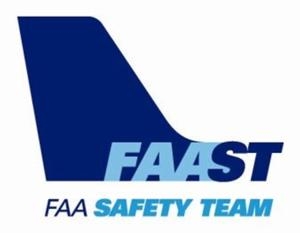Fri, Nov 11, 2016
The FAAST Safety Team Has Issued A Safety Briefing Regarding The Importance Of A Stabilized Approach
AeroSports Update has covered the stabilized approach subject a couple of times in the past, but it’s something that is so important it’s worth reviewing a recent Safety Briefing published by the FAA. While the term ‘stabilized approach’ sounds like something that’s hard to nail down for every approach, that’s simply not the case. It’s a matter of establishing certain standards for your operation and aircraft, and then sticking with them.

In the safety briefing, the FAA explains that focusing on establishing and maintaining a stabilized approach and landing is a great way to avoid experiencing a loss of control. A stabilized approach is one in which the pilot establishes and maintains a constant angle glidepath towards a predetermined point on the landing runway. It is based on the pilot’s judgment of certain visual clues, and depends on the maintenance of a constant final descent airspeed and configuration.
The FAA has also come up with a list of factors of the stabilized approach. They are:
- Maintain a specified descent rate.
- Maintain a specified airspeed.
- Complete all briefings and checklists.
- Configure aircraft for landing (gear, flaps, etc.).
- Maintain the correct altitude levels (e.g., 500 feet for VMC approach; 1,000 feet for IMC).
- Ensure only small changes in heading/pitch are necessary to maintain the correct flight path.
In the safety briefing, the FAA also addresses the need for a go around if the approach is not stabilized. The bulletin says that if the factors listed above are not met, the approach becomes “unstabilized,” which means a go-around for another attempt at landing.
If you choose to continue with an unstabilized approach, you risk landing too high, too fast, out of alignment with the runway centerline, or otherwise being unprepared for landing. These situations can result in loss of control of your aircraft.
Here’s some tips they offer for a stabilized approach:
- Pay attention to the wind in traffic pattern operations, especially on the base to final turn.
- Adjust your stabilized approach guidelines to your type of aircraft based on manufacturer’s guidance.
- Aircraft should be configured for landing at some predetermined distance from the airport or altitude, after which only small corrections to pitch, heading, and power setting should be made.
- If not stabilized, go around.
Most importantly, stabilized approach procedures and go arounds need to be practiced. This can be performed at altitude by using a predetermined altitude as a simulated airport and practicing normal traffic patterns, and approaches, and go arounds.
More News
Airplane Bounced About 3 Ft Then Touched Back Down And Then, With No Brakes Applied, The Airplane Began Veering To The Left Analysis: The pilot entered the airport traffic pattern >[...]
Aero Linx: British Microlight Aircraft Association (BMAA) The primary focus within all aviation activity is SAFETY. In all aspects of our sport SAFETY must come first, whether it b>[...]
From SnF25 (YouTube Edition): William Wynne Builds Practical Aircraft Engines on the Corvair Platform Seeking an affordable alternative to the traditional aircraft engine options, >[...]
How To Get A Story On Aero-TV News/Feature Programming How do I submit a story idea or lead to Aero-TV? If you would like to submit a story idea or lead, please contact Jim Campbel>[...]
From 2023 (YouTube Edition): Bridge of CiES CiES Inc. is a Bend, Oregon-based designer and manufacturer of modular embedded aircraft systems and sensors. The company’s fuel-l>[...]
 NTSB Final Report: Aviat A1
NTSB Final Report: Aviat A1 ANN's Daily Aero-Linx (07.08.25)
ANN's Daily Aero-Linx (07.08.25) Classic Aero-TV: Fly Corvairs Reliable Engine Alternative
Classic Aero-TV: Fly Corvairs Reliable Engine Alternative ANN FAQ: Contributing To Aero-TV
ANN FAQ: Contributing To Aero-TV Classic Aero-TV: CiES Fuel-Quantity and e-Throttle Systems Praised
Classic Aero-TV: CiES Fuel-Quantity and e-Throttle Systems Praised



